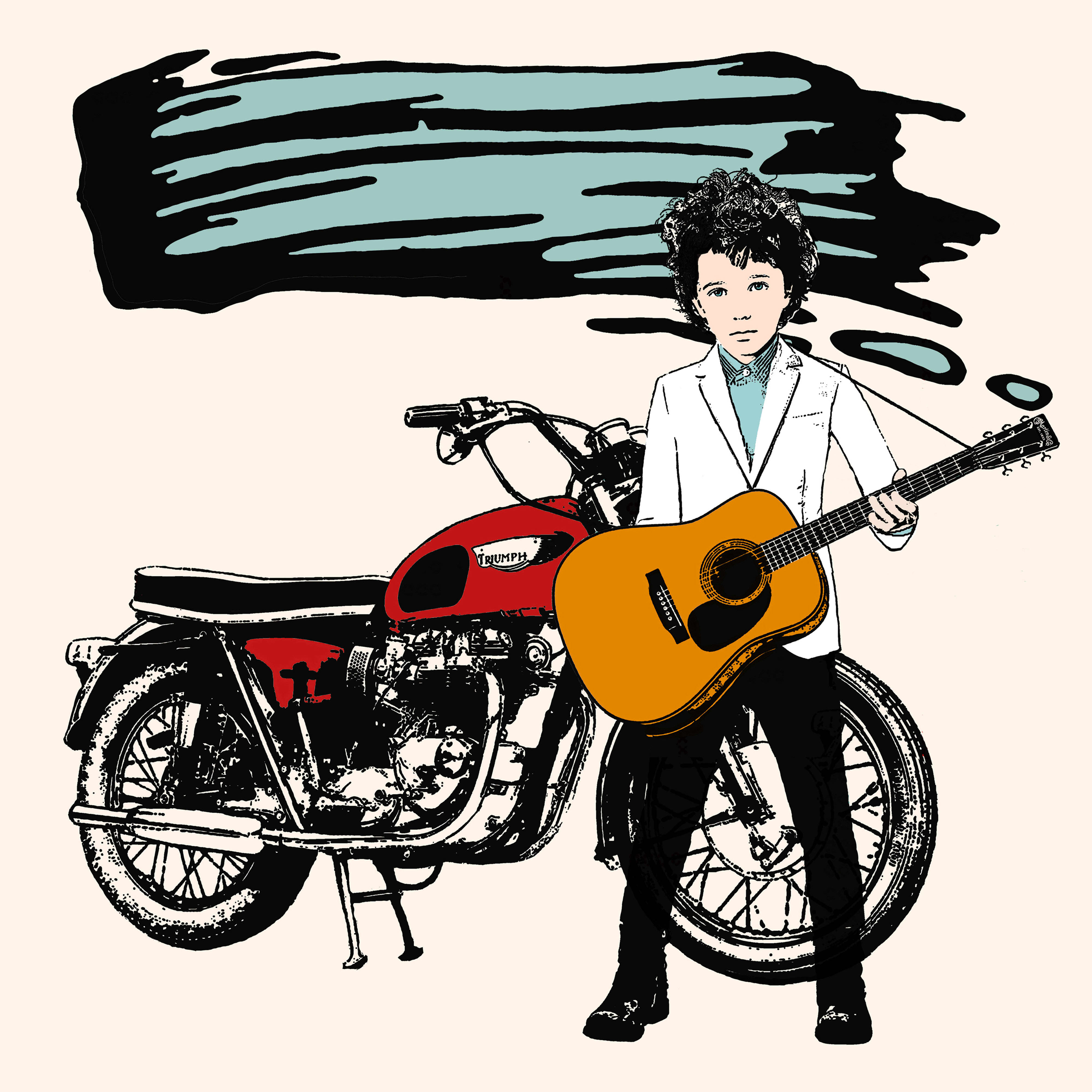Triumph of the Hero
Julie Headland
printPlease register / login for price
- 2017
- acrylic on canvas
- 48 h x 48 w in.
- artist notesA Triumph motorcycle, a Martin guitar and a Roy Lichtenstein “brushstroke” encompass a young Bob Dylan. Lichtenstein was fascinated by the many conventions in commercial art that we unconsciously accept. For example when you see diagonal lines on a mirror in a cartoon or illustration you know it means “mirror” even though there are obviously no such lines in reality. When you see red benday dots on a face to communicate skin tone you know it means skin tone. Lichtenstein used the brushstroke to make a direct comment on the elevated content and loaded brushwork of Abstract Expressionism. Abstract Expressionist artists had made the brushstroke a vehicle to directly communicate feelings; Lichtenstein's brushstroke is ironically depersonalized implying that though Abstract Expressionists disdained commercialization, they were not immune to it - many of their pictures were created in series, using the same motifs again and again, nullifying the notion that the artist’s brushstroke was the only truth. Lichtenstein’s intent is best captured in his own words: "The real brushstrokes are just as pre-determined as the cartoon brushstrokes."








